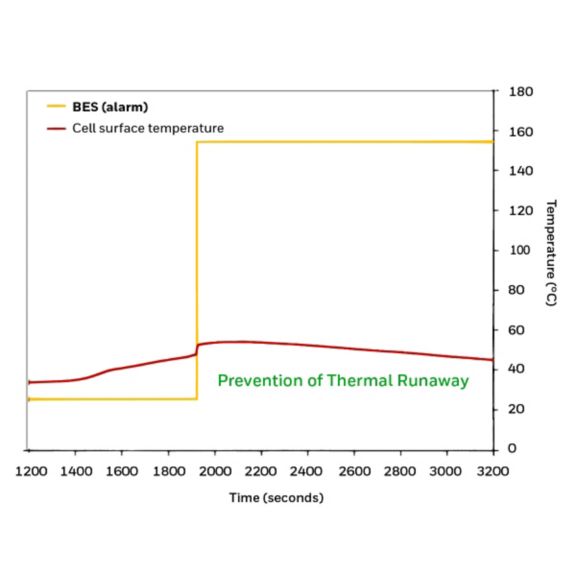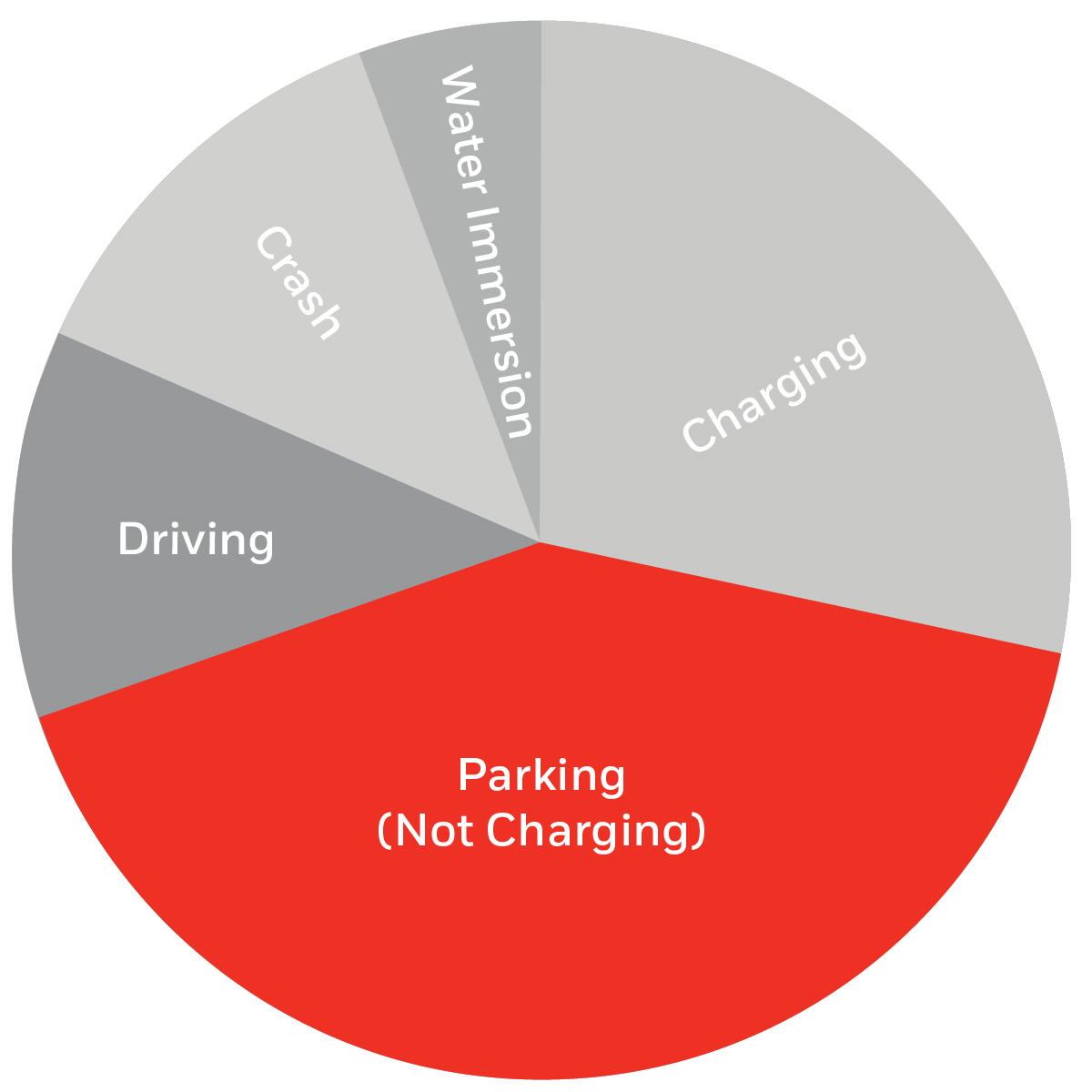Despite progress in cell chemistry and Battery Management Systems, fire incidents persist. IDTechEx* reports that about a third of EV fires happen when the vehicle is parked and not charging. EV fires cause significant damage to garages and surrounding vehicles, and there is a concern that these fires can reignite several days after being extinguished. This poses a serious public safety risk that requires immediate attention and preventative measures.
EARLY DETECTION & PREVENTION OF THERMAL RUNAWAY
Lithium batteries have flammable electrolytes that catch fire when subjected to excessive abuse such as thermal, electrical or mechanical abuse. The fire generated by one Li-ion battery cell can spread and trigger a chain reaction in nearby cells, leading to an irreversible and uncontrollable fire. Detecting the first vent which is the early release of electrolyte vapor may enable early detection and prevention of thermal runaway.
Battery cell abuse may create an increase in the internal temperature of a lithium-ion cell, leading to the breakdown of organic electrolyte solvents. As the temperature rises, the electrolyte within the cell begins to gasify. This gasification phase results in a build-up of pressure inside the cell, elevating the temperature beyond the flashpoint.
As the temperature continues to escalate, the separator material melts, creating a direct short circuit between the anode and cathode. The resulting electrical discharge can ignite the gases, leading to a fire. This fire can quickly escalate, igniting the electrodes and producing an intense fire with high temperatures. Furthermore, the combustion process releases hazardous gases such as hydrogen (H2), carbon monoxide (CO), and carbon dioxide (CO2)
As electrolytes are vented first prior to the fire, sensing these electrolyte vapors ensures early detection of thermal runaway and opens avenues to prevent fire. As shown, one third of EV fires occur when the vehicle is charging. Over a period, overcharging can happen due to cumulative error, failure of the battery management system, improper cell balancing etc. The test case below shows how electrolyte vapor sensing can help prevent thermal runaway for such a failure mode presented by Honeywell at the 2024 North America Battery Show in Detroit, MI.
- In this test, a pouch cell is abused by overcharging at 2C rate. Once the electrolyte sensor alarm is triggered, the charging is turned off
- Cell cools down and thermal runaway is prevented
- The Battery Electrolyte Sensor (BES) successfully detected signs of thermal runaway at an early stage, i.e. the release of electrolyte vapors, enabling the activation of a safety protocol. This protocol involved disconnecting the charging source, which effectively halted the progression of the thermal runaway process and mitigated potential hazards.
*Reference – Dr James Edmondson, EV Fires: Less Common But More Problematic? (2022)


As electrolyte vapors are released during the early stages of thermal runaway, detecting the presence of electrolyte vapors within the lithium-ion battery pack presents a crucial opportunity to activate a safety protocol which can help arrest the progression of thermal runaway. This safety protocol may involve removing the source of abuse such as overcharging and thermal abuse. By taking these measures, overall vehicle and passenger safety can be significantly enhanced.
Honeywell Sensing Solutions provides a comprehensive portfolio of advanced sensing, switching, and test & measurement technologies designed to meet the diverse needs of industries such as healthcare, transportation, industrial automation, and electric vehicles. With a focus on precision and reliability, these solutions enable optimized performance across critical applications. Supported by a team of expert engineers, Honeywell ensures personalized and innovative approaches, working collaboratively with customers to deliver tailored solutions that meet their specific requirements and performance standards, driving efficiency and ensuring long-term operational success. To learn more, visit the BES Series here or contact us here.







